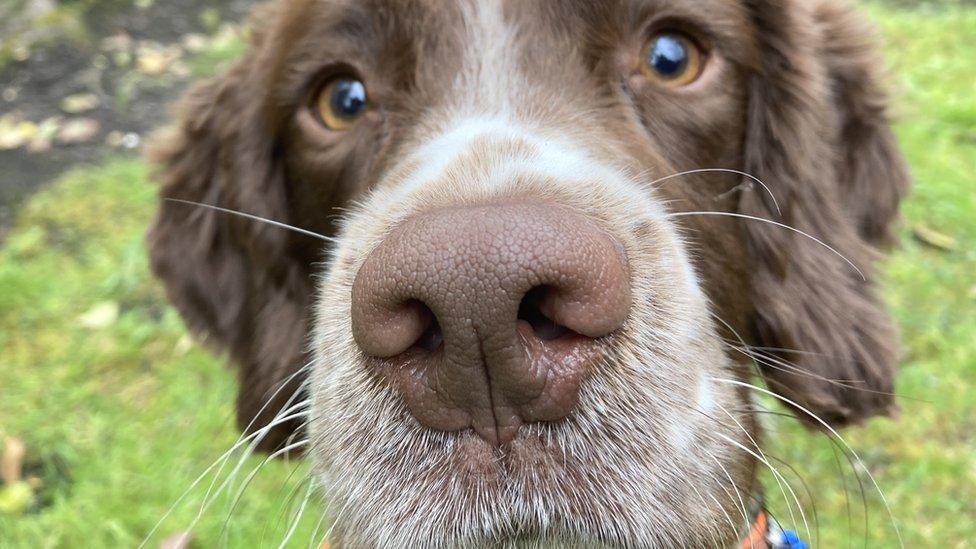Call for extra £8m to eradicate stoats from Orkney
- Published
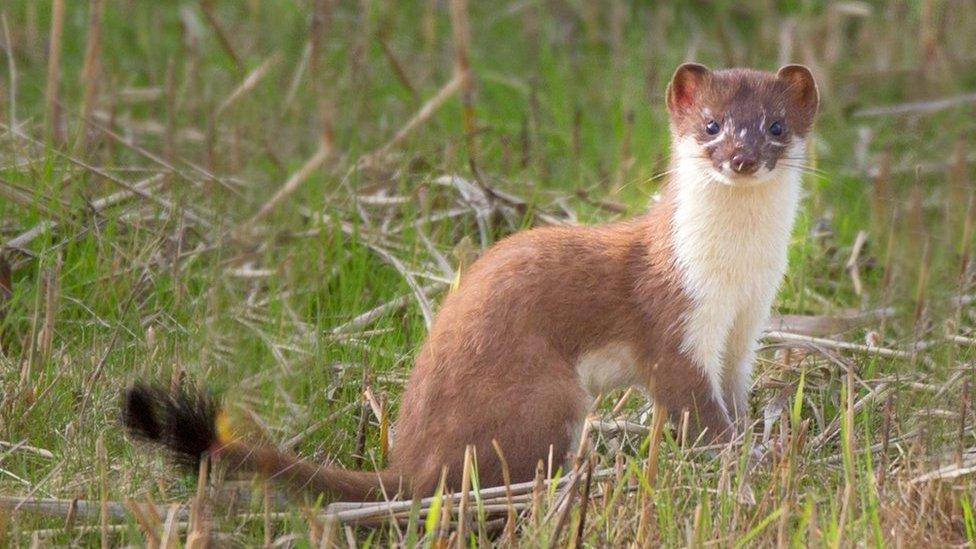
Stoats eat small birds and mammals, including the native Orkney vole
A project to eradicate stoats from Orkney could take another five years and cost a further £8m to complete, it has been claimed.
The Orkney Native Wildlife Project began trapping the animals in 2019 and has so far removed more than 5,000.
The animals are said to pose a major threat to breeding seabirds as well as the native Orkney vole.
Project organisers said the task was always going to be difficult but it was setback by Covid pandemic restrictions.
Stoats are common in parts of mainland Scotland but they only started appearing in Orkney in 2010.
Organisers claim their plans are the biggest invasive predator eradication on an inhabited island, anywhere in the world, with about 7,000 traps laid around the mainland and the coastline of the neighbouring islands.
The project has already cost about £8m but those behind it claim the same amount will be required to finish the job, with three years of eradication and two years of further monitoring.

Stoats have been sighted across Orkney mainland
RSPB Scotland, NatureScot and Orkney Islands Council operate the scheme, which has previously received funding through the National Lottery Heritage Fund and EU Life, as well as the Scottish government's Nature Restoration Fund.
Stoats are very skilled hunters which typically feed on small mammals, birds and eggs but can kill prey much larger than themselves.
They also tend to kill more than they need and hide the rest to eat later.
In Orkney, hidden caches have been found containing as many as 100 voles.
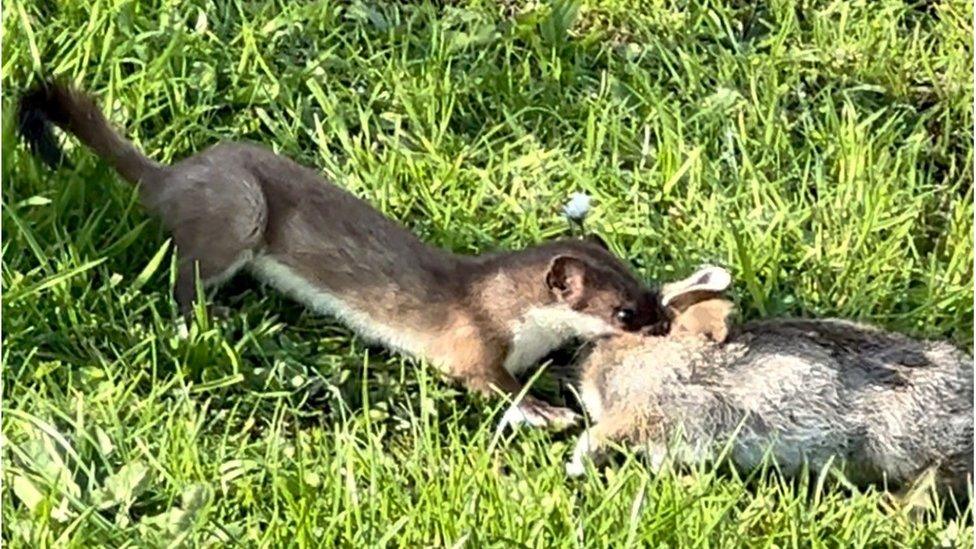
Stoats on Orkney have been seen to kill animals bigger than themselves such as rabbits
Orkney is home to internationally-important populations of wildlife.
It has 20% of the UK's hen harriers, 11% of its breeding seabirds and vital populations of curlew, lapwing, and oystercatcher.
The project has worked with more than 900 landowners across the Orkney islands to prevent stoats from colonising more land.
It said progress was significantly impacted by the Covid pandemic which prevented trapping throughout the 2020 breeding season.
This allowed the stoat population to rebound to pre-eradication levels undoing the previous progress.
Since trapping restarted, stoats have been found making dens in attics, under kitchen floorboards, in garden rockeries, and in greater density than on the UK mainland.
Project organisers said their unusually-bold behaviour in Orkney is likely to be due to the abundance of food and a scarcity of natural predators.
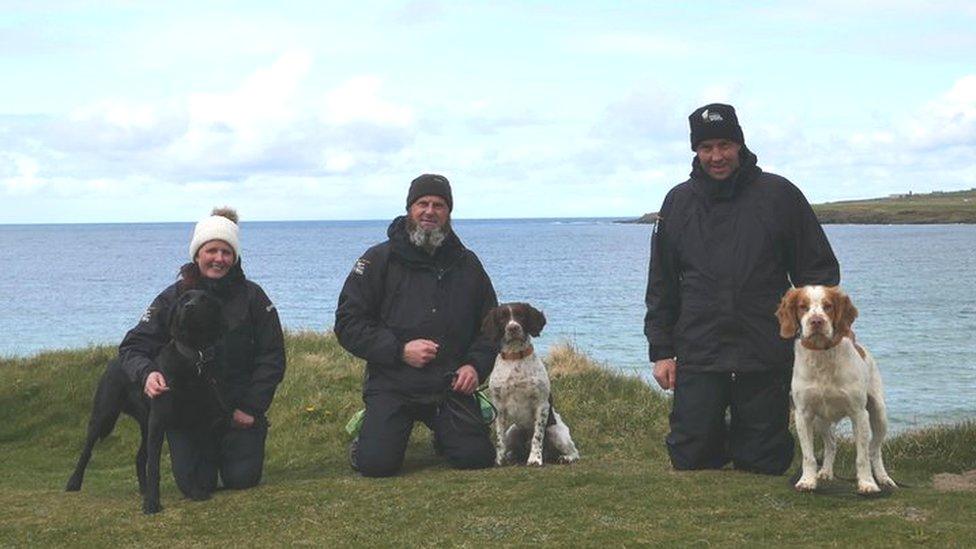
Detection dogs are being used to locate the stoats
This meant the project has taken a more active approach to trapping, using Europe's first stoat detection dogs on the frontline earlier than expected.
The detection dogs are already a familiar sight on the East Mainland and the linked isles, including Burray and South Ronaldsay, but from next year there will be 10 working across the whole of the Orkney mainland.
Organisers hope that within two years it can transition into the 'mop-up' phase, meaning that the stoat population has reached a critical tipping point in Orkney.
The eradication is set to be complete in 2027, at which point the two-year monitoring period will kick in.
The project estimates the cost of finishing the eradication and returning Orkney to being stoat-free will be an average £1.5m a year over five years.
However, it said the cost of supressing stoats enough to prevent them from spreading to more islands was estimated at a similar amount per year forever.
Related topics
- Published5 September 2017
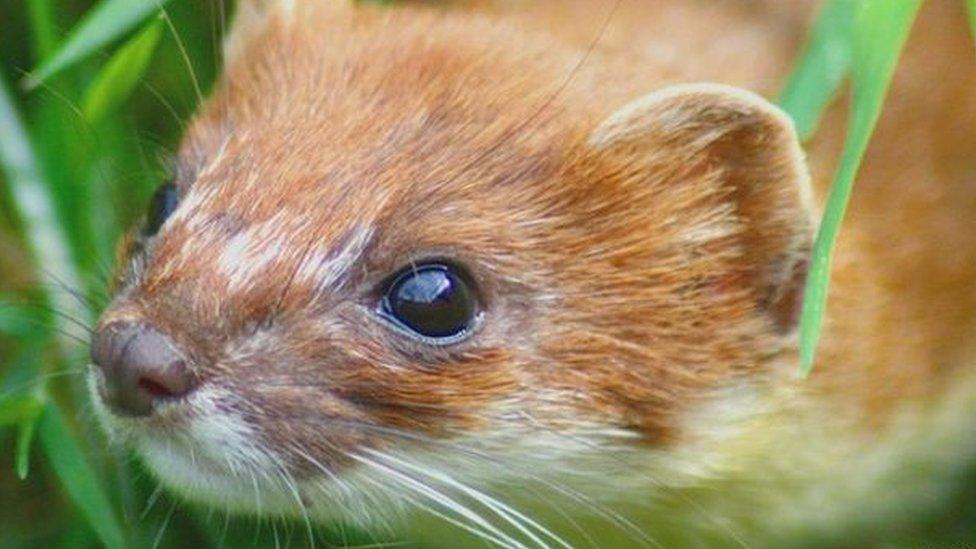
- Published25 October 2018
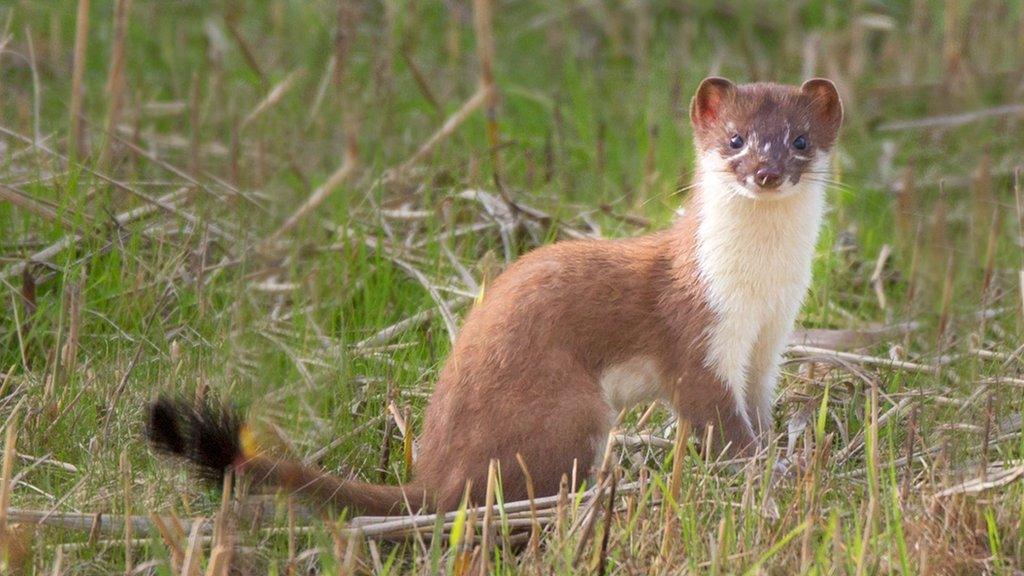
- Published2 May 2017
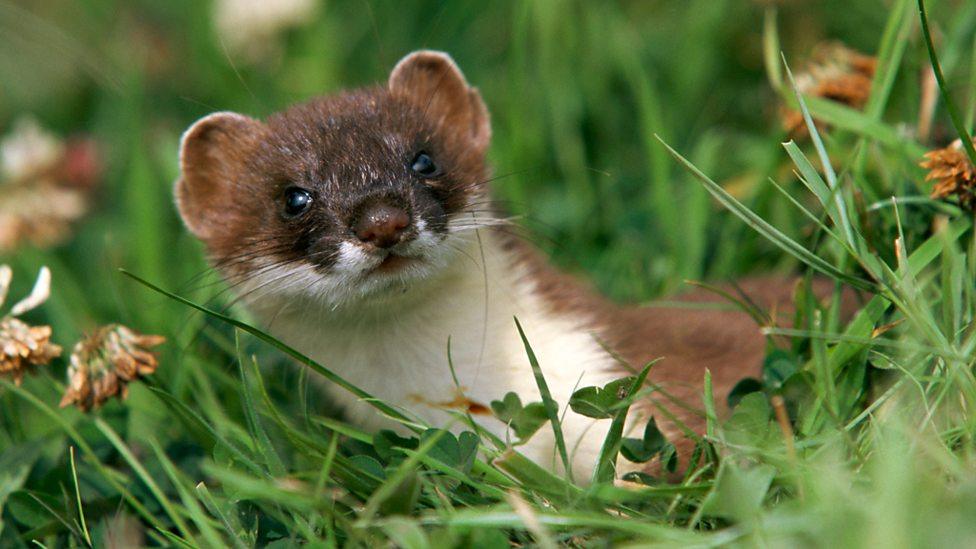
- Published19 May 2021
